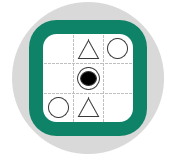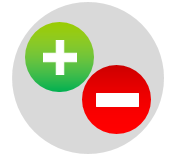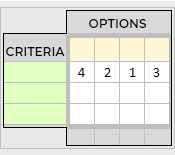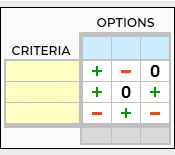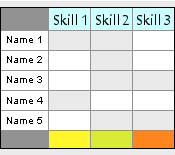
Paired Comparison Analysis is a systematic approach for evaluating a small range of options by comparing them against each other. This technique is a useful and easy technique for rating and ranking alternatives where the evaluation criteria are subjective by nature. This is practically helpful when priorities are not clear enough, when alternatives are completely different from one another, or when there is little objective data to base our decision on.
Paired comparison is often used to choose the most compelling problem to solve, or to select the alternative that will be the most effective. It is useful in a wide range of applications, from selecting the concept design for a new product before it goes into production, to deciding the skills and qualifications when hiring people for a new position. Decisions like these are more difficult to make than comparing which investment to take or which vendor to select, as the selection would be based on based on quality, price, and delivery speed.
Paired comparison analysis is often performed with the aid of a matrix. This matrix should be made in a way that avoids comparing an option with itself or duplicating any comparison. Two extra rows may be added at the end of the table representing the number of times each option has been selected, and the ranking of all options based on their count.
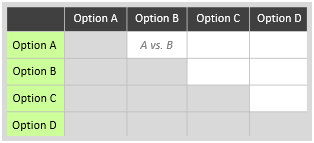
Implementing a Paired Comparison Analysis

- With your team, identify the options to be evaluated.
- Identify the evaluation criterion to help you make the decision (e.g. the most important, the most interesting, or the easiest to implement).
- List all the options on the left hand column and on the top row of the matrix.
- In each blank cell, compare the option in the row with the option in the column, then write in the cell the option that better meets the evaluationn criterion.
- Repeat the process until all possible pairs are evaluated.
- Count the number of times each option has been chosen.
- Rank the options based on their count.
- Consider the options with the highest ranking.
Note: Further solutions can be developed by mixing the positive aspects of a number of solutions.
Example
For instance, let us consider the scenario where you need to decide how to spend your upcoming summer holidays, and you have four ideas under consideration. In such a situation, using the paired comparison analysis can provide valuable insights to aid you in making a well-informed decision.
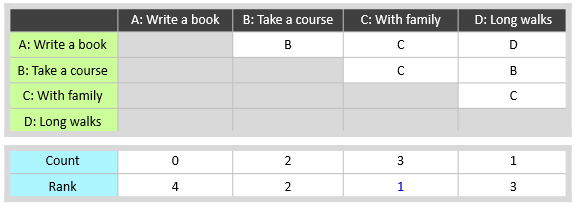
Example
The following is an example that uses the paired comparison analysis to identify and rank the top motivators for a team.
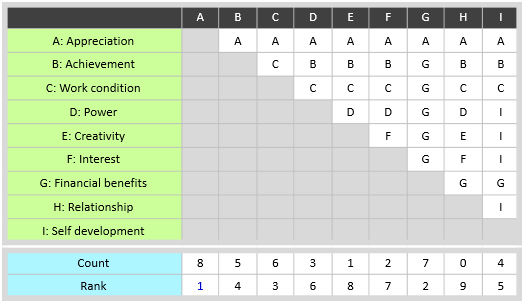
The team has selected ‘appreciation’ to be their top motivator, followed by ‘financial benefits.’
Wrapping Up
In summary, paired comparison analysis offers a practical method for comparing a small number of options when subjective criteria come into play. It’s applicable in various situations, from product design to personal decision-making. This technique uses a matrix to implement the comparisons. By using this approach, one can make well-informed decisions, even in complex situations.
Other Formats
Do you want to use the slides in your training courses?

Paired Comparison Analysis Training Material – $11.85
Related Articles
Related Templates




